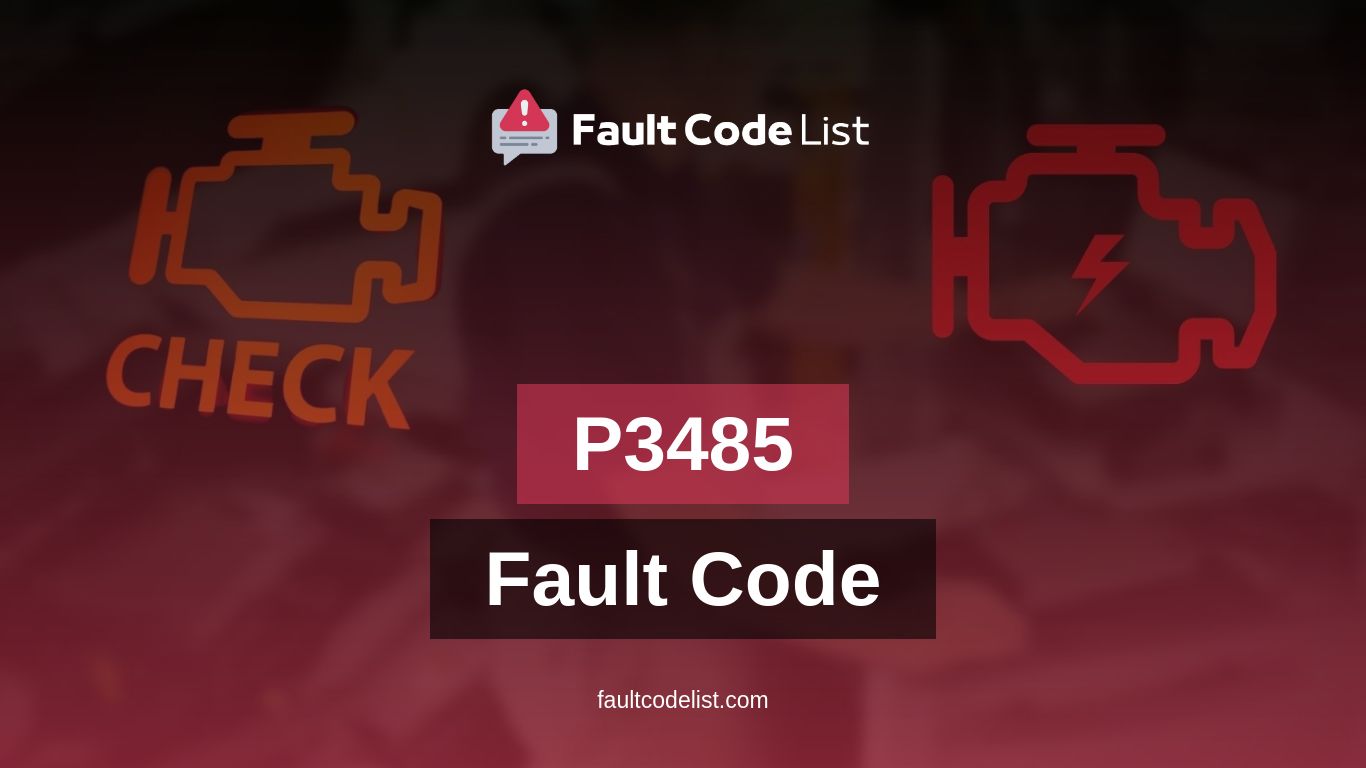Thank you for joining us today as we discuss an important automotive fault code, P3485 Cylinder 11 Exhaust Valve Control Circuit/Open. This code is commonly encountered in vehicles and can cause various symptoms, such as engine misfires, loss of power, and increased fuel consumption. In this blog post, we will explore the symptoms, causes, and solutions associated with this fault code.
Before we delve into the details, it’s important to understand that fault codes, such as P3485, are generated by the vehicle’s onboard computer system, known as the Engine Control Unit (ECU), to indicate a specific problem. These codes help automotive technicians troubleshoot and locate the source of the issue, ensuring effective repairs.

What are the symptoms of code P3485?
When your vehicle’s ECU detects a problem in the exhaust valve control circuit of Cylinder 11, it will trigger the P3485 fault code. Some common symptoms associated with this code include:
- Engine misfires: You may experience rough idling, hesitation, or a noticeable decrease in engine performance.
- Loss of power: The vehicle may struggle to accelerate or maintain speed, especially during heavy loads or uphill climbs.
- Increased fuel consumption: A faulty exhaust valve control circuit can lead to inefficient combustion, resulting in higher fuel consumption.
- Illuminated check engine light: The ECU will typically illuminate the check engine light to inform the driver of the detected fault.
If you notice any of these symptoms, it is important to address the issue promptly to avoid further damage to your vehicle’s engine.
What are the reasons for the P3485 code?
Several factors can contribute to the occurrence of the P3485 fault code. Here are some possible causes:
- Faulty wiring or connectors: Damaged or corroded wires, as well as loose or dirty connectors, can disrupt the electrical signals in the exhaust valve control circuit.
- Defective exhaust valve control solenoid: The solenoid responsible for controlling the exhaust valve may fail, preventing proper operation and causing the fault code.
- ECU malfunction: In some cases, a faulty ECU can inaccurately detect issues in the exhaust valve control circuit and trigger the P3485 code.
It is crucial to conduct a thorough diagnosis to identify the specific cause in your vehicle. This may involve using specialized diagnostic tools or seeking assistance from a qualified automotive professional.
What is the solution for the P3485 code?
Once the cause of the P3485 code has been determined, appropriate measures can be taken to resolve the issue. Here are some common solutions:
- Repair or replace faulty wiring or connectors: If damaged or faulty wiring or connectors are identified, they should be repaired or replaced to restore proper electrical connectivity and eliminate the fault code.
- Replace the faulty exhaust valve control solenoid: If the solenoid responsible for controlling the exhaust valve is found to be defective, it should be replaced with a new one to ensure proper operation.
- Repair or replace faulty ECU: In rare cases where the ECU itself is the cause of the fault code, it may need to be repaired or replaced by a qualified technician.
It is essential to follow the manufacturer’s recommended procedures and guidelines when addressing the P3485 fault code. This will help ensure accurate repairs that effectively resolve the issue.
Summary
In summary, the P3485 Cylinder 11 Exhaust Valve Control Circuit/Open fault code can cause various symptoms, including engine misfires, loss of power, and increased fuel consumption. Possible causes for this code include faulty wiring, defective solenoid, or ECU malfunction. The solutions involve repairing or replacing damaged wiring or connectors, replacing the faulty solenoid, or repairing or replacing the ECU itself. It is crucial to address this fault code promptly to prevent further damage to your vehicle’s engine and optimize its performance.
We hope that this blog post has provided valuable insights into the P3485 fault code, helping you understand its symptoms, causes, and possible solutions. If you encounter this code in your vehicle, we recommend consulting a qualified automotive professional for accurate diagnosis and repair.
